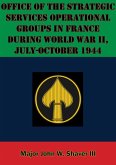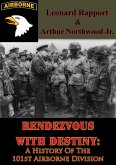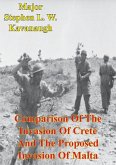Contains 6 maps and illustrations.As the tens of thousands of American troops began their approach toward the forbidding German-defended Normandy coast, their comrades in the 82nd and 101st Airborne divisions had already flown over the Channel and began dropping and gliding into enemy territory. The Airborne Divisions had a role critical to the success of the entire Normandy Landings; beyond the initial beach landing areas were miles of flooded defended ditches and waterways. If the German troops managed to defend these bottlenecks the Americans on Utah Beach, at the extreme right of the operation, would be unable to move forward and might have foundered on the beach. The American airborne troops, like their British and Canadian compatriots on the left flank, were the elite of their respective armies and expected that their unique battle skills would enable them to deal with any tough mission that was bound to come their way.One such waterway was the Meredet river and its important bridge, this objective was handed to the troops of the 325th Glider Infantry who would wing their way in flimsy and dangerous gliders. As the brave 325th rushed the bridge they knew that their trial had only just begun; cut-off from their own troops on the beaches, lightly armed and surrounded by Germans who would try and respond to their capture of the pivotal bridge.S L A Marshall, the Official Historian for the European Theatre of Operations, interviewed the men of the 325th on their return to the U.K. and from this collected material set about recording this story of their courage, dedication and fighting skill.
Dieser Download kann aus rechtlichen Gründen nur mit Rechnungsadresse in A, B, BG, CY, CZ, D, DK, EW, E, FIN, F, GR, HR, H, IRL, I, LT, L, LR, M, NL, PL, P, R, S, SLO, SK ausgeliefert werden.





![AAF In The Invasion Of Southern France [Illustrated Edition] (eBook, ePUB) AAF In The Invasion Of Southern France [Illustrated Edition] (eBook, ePUB)](https://bilder.buecher.de/produkte/41/41860/41860430m.jpg)

![FIGHT AT THE LOCK [Illustrated Edition] (eBook, ePUB) FIGHT AT THE LOCK [Illustrated Edition] (eBook, ePUB)](https://bilder.buecher.de/produkte/41/41867/41867087m.jpg)

